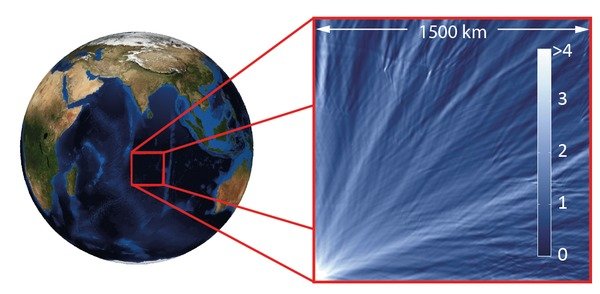
Random focusing of tsunami waves
Tsunamis are probably among the deadliest, frequently recurring natural disasters. Typically, submarine earthquakes and landslides excite these extremely long wavelength gravity waves that travel the oceans with speeds of several hundred km/h. Due to the unpredictable nature of the earthquakes that cause them, long term forecasts of tsunamis seem to be far out of reach. However, despite their speed, due to the large distances they might travel over the ocean, there can be hours between their excitation and the time when they hit the shore. Following the devastating tsunami catastrophes in recent times, great efforts are made to use this time for tsunami warning systems. A prerequisite, however, is a thorough scientific understanding not only of the excitation of tsunamis but also of their propagation in the ocean.
An important aspect is that tsunamis exhibit surprisingly strong height fluctuations: run-up measurements and detailed simulations of past tsunami events have shown pronounced fluctuations in the crest height of tsunamis. While in-detail numerical modeling of the wave propagation in the measured depth-profile of the ocean floor captures many aspects of these fluctuations, only fundamental studies of the focusing mechanisms that cause them, will allow to scrutinize and improve the assumptions made in these models. It has been known, e.g, that the presence of large underwater islands or the shape of the tsunami source can affect the waves heights. We have recently shown that the consecutive effect of even tiny fluctuations in the profile of the ocean floor (the bathymetry) can cause unexpectedly strong fluctuations in the wave height of tsunamis with maxima several times higher than the average wave height, with severe implications for tsunami predictions.